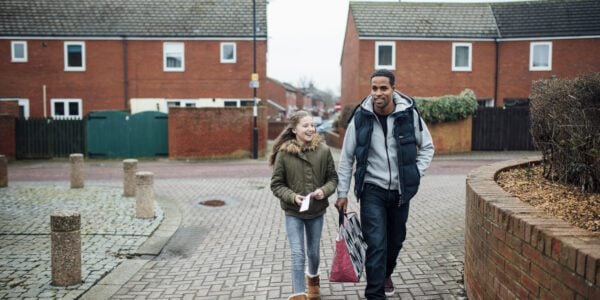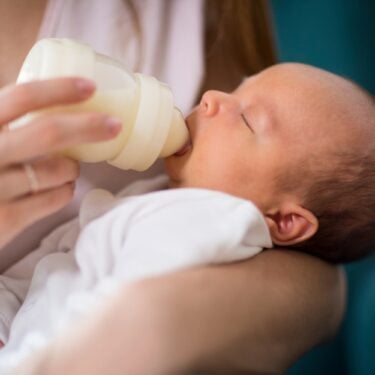
18/05/11
4 min read
The only Family Drug and Alcohol Court (FDAC) in the UK has been successful in improving outcomes for children by tackling the substance misuse of parents at an early stage of care proceedings, according to an independent evaluation of the court published today by the Nuffield Foundation and Brunel University.
Parents who had been through the FDAC system were more likely to stop their substance misuse than those in ordinary care proceedings, meaning fewer children were taken into care. When parents were unable to control their substance misuse, FDAC made swifter decisions to find permanent alternative homes for children. The integrated approach also has potential to reduce costs.
FDAC’s success has also been recognised by two major government reviews of family justice and child protection. The Munro Review of Child Protection was ‘impressed’ by the pilot and used it as an example of how multi-disciplinary teams can provide effective interventions for vulnerable children.
This reiterates the findings from the Family Justice Review interim report, which said FDAC showed ‘considerable promise’ and ‘potentially justifies a further limited roll out’. The Family Justice Review, led by David Norgrove, also emphasises the importance of judicial continuity – having the same judge follow a family through all stages of proceedings – a unique and important feature of FDAC.
What is FDAC?
FDAC is a new way of dealing with care proceedings when parental substance misuse is causing harm to children. This is the main issue in up to two thirds of all care proceedings. Unlike conventional care proceedings, parents in FDAC see the same judge throughout and meet with them every fortnight. They also receive support from a multi-disciplinary team, including fast access to substance misuse services and assistance with other issues such as housing, domestic violence and financial hardship.
The FDAC pilot is being run in the Inner London Family Proceedings Court at Wells Street and the multi-disciplinary team is provided by The Tavistock and Portman NHS Foundation Trust in partnership with children’s charity Coram. The pilot is based on a successful US model and began in January 2008 with three participating London Boroughs – Camden, Islington and Westminster. Hammersmith and Fulham joined the pilot in April 2011 and the pilot will run until March 2012.
Families reunited and substance misuse controlled
The independent evaluation team, led by Professor Judith Harwin at Brunel University and funded by the Nuffield Foundation and the Home Office, found that FDAC has been more successful at controlling substance misuse and reuniting families than ordinary proceedings. At the time of the final court order, 39% of FDAC mothers were reunited with their children compared to 21% of mothers from a comparison group in ordinary care proceedings. All but two parents said they were in favour of the FDAC approach.
Cost savings
More children staying with their families means that local authorities save money. The evaluation also shows that FDAC reduced costs in other ways such as shorter care placements, shorter court hearings and fewer contested cases.
“We are delighted that both the Munro Review and the Family Justice Review have recognised the earlysuccess of FDAC in breaking the cycle of harm caused to families by substance misuse and we hope the government takes heed of the recommendation to consider rolling out the model further”, said Professor Judith Harwin.
District Judge Nick Crichton said:
“This evaluation shows that swift access to integrated support services helps parents control their substance misuse and be reunited with their children.Where parents are unable to address their substance misuse, FDAC’sintervention helps to secure an earlier alternative permanent home for children.All the evidence so far suggests that extending this pilot and rolling out FDAC inother areas would be in the best interests of children and families.”
In a joint statement, children’s charity Coram, The Tavistock & Portman NHS Foundation Trust and the London Boroughs of Camden, Islington and Westminster, said: “We are very pleased to receive independent recognition of the work of the Family Drug and Alcohol Court. This further demonstrates how, with successful multi-agency working, families can be given a greater chance to stay together and the best possible decisions can be swiftly taken for the future of the children at the heart of these cases.”
ENDS
Contact: Fran Bright, Communications Manager, 020 7681 9623: fbright@nuffieldfoundation.org.
Notes to editors
1.The Munro Review of Child Protection published its final report on 10 May 2011. FDAC is featured as a case study (101-104). The report is published on the DfE website: http://www.education.gov.uk/munroreview/firstreport.shtml
2.The Family Justice Review published its interim report on 31 March 2011. It references FDAC on pages 140-141 and again in Annex O (Pages 214-217). The report is published on the MoJ website: http://www.justice.gov.uk/publications/family-justice-review.htm.
3. FDAC sits at the Inner London Family Proceedings Court in Wells Street. Between January 2008 and the end of June 2009, 55 families (77 children) entered the court. The evaluation compares this sample to a comparison sample of 31 families (49 children) involved in ordinary care proceedings in two other local authorities during the same period.
4. This evaluation of FDAC was funded by the Nuffield Foundation and the Home Office. Cases were followed up for 6 months from the first hearing and it was also possible to track 41 FDAC and 19 comparison cases to final order. Interviews were held with parents and with the FDAC judges, team and court staff and commissioners involved in the set-up and implementation of FDAC. Focus groups were held with parent mentors and with professionals who had cases in FDAC in the first 18 months (lawyers, guardians, social workers and staff from adult treatment services).
5. The total funding secured for the five-year FDAC project is £2,103,129. This has been contributed by DCSF (now DfE), the Home Office, the Department of Health, the Ministry of Justice and the four participating London boroughs.



















































